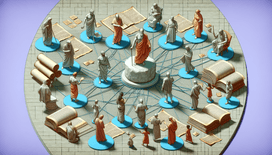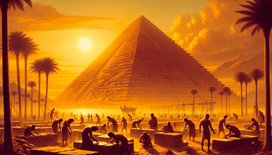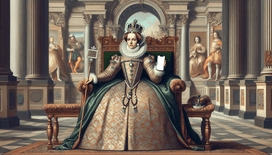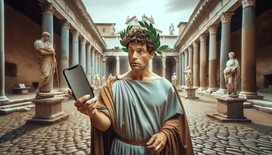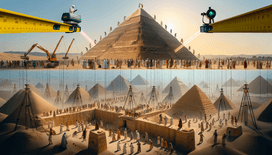Ah, the Great Fire of London, that notorious inferno which swept through the capital in 1666, reducing much of the city to ashes and giving chimney sweeps seemingly endless job security. But imagine, dear readers, if we could wave a magic wand – or rather a VR headset – and rewrite history. What if Sir Christopher Wren and his contemporaries had access to the wonders of virtual reality? Put on your thinking caps or, in this case, strap on your metaphorical headsets as we explore this sizzling alternate reality.
The Fiery Prelude
The Great Fire of London started in a baker’s shop on Pudding Lane. Now, this is the kind of bakery that didn’t just make bread rise, it made temperatures soar to catastrophic levels. As the fire spread with gusto, the narrow streets and timber-framed houses of London became a perfect playground for flames. Our city's leadership then had a single tool in their fire-fighting arsenal: a bucket. Yes, buckets of water and gin were the stalwarts of the age.
But let's weave a different tale, where Wren and his peers had VR goggles tucked neatly under their frilly cuffs. Instead of relying on a bucket brigade, they could have stepped into virtual sims of the city, engaging in simulated firefighting drills over an ale (or three) at the local tavern.
Virtual Prep and Prevention
With virtual reality, the fire brigade of 1666 could have practised their firefighting strategy in a realistic sim city. No more fumbling around like a group of squabbling chimney sweeps, trying to outpace rampaging flames. In this alternate universe, our heroes trained in virtual reality would have been as sleek and coordinated as a West End dance troupe.
Structures could be analysed in VR, highlighting weak spots in the architectural design of the era. Perhaps after a particularly heated virtual scenario, Wren would have exclaimed, “Blimey, I see! We must implement firebreaks and create wider streets to thwart these virtual flames.”
Wren's Revolutionary Designs
Sir Christopher Wren was a man with an eye for innovation, his name forever etched in the annals of architectural brilliance. Imagine how VR would have dialled that up several notches. As he surveyed the virtual London, Wren could manipulate his designs with a mere flick of the wrist, experimenting with fire-resistant materials and thinking ahead of his time.
Perhaps virtual meetings with fellow architects could have led to spirited debates, resulting in a blueprint revolution. “I say, guv'nor, let’s build with stone in VR! Imagination's only as limited as their Sunday roast!” Future generations might never have known a city defined by stone and brick rather than smouldering timber.
Virtual Reality: The Ultimate Fire Drill
Imagine Wren hosting a virtual reality fire safety drill. Londoners would gather with goggles firmly in place, diving into flame-filled scenarios without getting a singe on their periwigs. “Ye olde virtual realms make for splendid practice,” they’d say, as they perfected escape routes and built virtual barricades.
Armed with knowledge from virtual escapades, the instruction would flow: “Remember, fellow Londoners, in case of another fire, only shout 'fire' if you’re on fire! Otherwise use your VR scripts to douse it!”
The Aftermath, Reinvented
While the real Great Fire left a trail of charred chaos, in our fantastical version, the outcome might have been cheerfully different. People clinking tankards and patting themselves on the back for saving not only their city but setting a precedent for fire readiness across the globe!
Sir Christopher Wren, pleased as punch, would sit back with his VR goggles, sketching the new St. Paul's Cathedral. Perhaps indulging in the thought, “With VR, a cathedral that stands firm and doesn’t flambé at the slightest provocation!”
So, there you have it, my history-hungry companions. With the power of virtual reality in the hands of 17th-century London's finest, the Great Fire could very well have been a mere flicker in history, a blaze that was brilliantly contained with little more than a few virtual scorches.
In the end, perhaps it's not just virtual reality that offers these insights, but the very exercise of imagining what could have been. For in those ponderings lies as much strategy as whimsy, a burning beacon illuminating our understanding of history's true potential.


